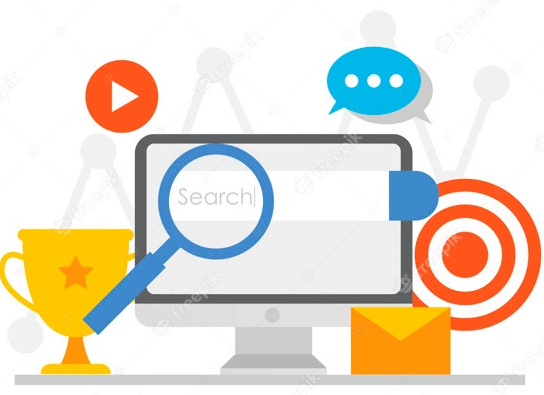
Intro: Tips to help Google find a website on the Internet
In today's digital age, having a website is essential for any business or organization. However, simply having a website is not enough.
With millions of websites on the internet, it can be difficult to ensure that your website stands out and reaches its intended audience. One way to improve your website's visibility is by optimizing it for search engines such as Google. In this article, we will discuss three tips to help Google find your website.
Google's top recommendations for finding your website
If you have recently created a new web page and want to start appearing in Google search results, either with any type of word or a combination of these, Google itself recommends following:
- In the root of your site you must have a sitemap file with the most important links of your web page.
- On the main page of your website there should be a link to a page called "sitemap" that consists of a list of the most important links on your site.
- There should not be a very high number of links on your website, no more than several thousand.
- Your web server must support the "If-Modified-Since HTTP header", telling Google whether your web content has changed since the last time Google crawled your site.
- In the root of your site you must have a robots.txt file whose objective will be to avoid crawling inappropriate pages or pages in a loop with infinite redirects. Google has a tool that allows you to test your robots.txt file.
There are web tools to analyze all these factors, i.e. if your website has a sitemap, robot.txt file, if it uses "https" and other common errors.
Indirect way for Google to find your website
- Use relevant keywords.
- Write high quality informative content.
- Using meta descriptions and title tags.
- Improving website structure using header tags.
- The website is mobile friendly.
- Improving website load speed.
- Building backlinks.
We will explain in depth what has been said so far so that it is clearer how Google can find your website more easily.
Use relevant keywords
The content on your website is crucial for Google to understand what your website is about and to rank it accordingly.
One way to optimize your website content is by using relevant keywords and phrases throughout the website.
These keywords should be included in page titles, headings, and body content.
We recommend the following article to learn how keywords are used in an web page.
It is important to use keywords naturally and not to stuff them in, as this can result in a penalty from Google.
We also recommend the keyword analysis tool within a web page to see if we are using keywords correctly within that site.
Write high quality informative content
Google rewards websites that provide valuable information to its users. The content should be well-written, engaging, and easy to read.
The vast amount of content available online, it is crucial to create high-quality informative content that stands out from the rest.
- The purpose of a blog post.
It is important to understand the purpose of a blog post. A blog post is a piece of content published on a website that is written in an informal or conversational style.
There are various types of blog posts, including listicles, how-to guides, opinion pieces, and news articles.
The goal of a blog post can vary depending on the type of post, but it typically aims to inform, educate, entertain, or persuade the reader.By understanding the purpose of a blog post, writers can tailor their content to achieve their desired outcome.
- The elements of high-quality informative content.
The key to creating high-quality informative content is to start with a well-researched and carefully selected topic.
Once a topic is chosen, it is important to develop a clear thesis statement that outlines the main argument or point of the blog post.
Credible sources should be used to support the thesis, including statistics, studies, and expert opinions.
By using reliable sources, the writer can establish credibility and authority on the topic.
Additionally, the use of visuals such as images, videos, and infographics can enhance the reader's understanding and engagement with the content. - The writing and editing techniques necessary to produce compelling blog posts.
Effective writing and editing techniques are essential for producing high-quality informative content. Writing in a clear and concise manner is crucial to ensure that the reader can easily understand the message being conveyed.
Using active voice and avoiding passive voice can make the writing more engaging and dynamic. Editing for grammar, spelling, and punctuation errors is necessary to ensure that the content is polished and professional. It is also important to consider the formatting of the blog post, including the use of subheadings, bullet points, and short paragraphs, to make the content more visually appealing and easier to read.
Using meta descriptions and title tags to help Google find a website on the Internet
Meta descriptions and title tags provide a brief summary of the page content and help Google understand what the page is about.
We recommend the following article to understand what are the titles and meta descriptions, as well as headings, within a web page and their correct positioning.
These elements play a significant role in search engine optimization (SEO) and can greatly impact your visibility online:
- Meta descriptions are short snippets of text that appear below the title tag in search engine results pages (SERPs).
Their purpose is to provide a brief summary of the content on a webpage and entice users to click through to the site.
Writing effective meta descriptions is important for several reasons:- Firstly, meta descriptions can greatly impact your click-through rate (CTR). A well-crafted meta description can make your webpage stand out in search results and entice users to click through to your site.
This, in turn, can improve your search engine rankings as search engines take CTR into account when determining the relevance and quality of a webpage.
To write effective meta descriptions, it is important to keep them concise (around 155 characters) and include relevant keywords.
You should also aim to provide a clear and compelling summary of your webpage's content, highlighting its unique value proposition.
- Firstly, meta descriptions can greatly impact your click-through rate (CTR). A well-crafted meta description can make your webpage stand out in search results and entice users to click through to your site.
- Title tags are HTML elements that define the title of a webpage.
They appear in the browser's title bar and as the clickable headline in SERPs.
Title tags are important for both SEO and user experience:- From an SEO perspective, title tags are one of the most important on-page ranking factors.
Search engines use title tags to understand the content of a webpage and determine its relevance to a user's search query. Including relevant keywords in your title tags can help improve your search engine rankings. - From a user experience perspective, title tags provide a clear and concise description of what a webpage is about. They help users understand the content of a webpage and decide whether or not to click through to the site.
To write effective title tags, it is important to keep them concise (around 60 characters) and include relevant keywords.
You should also aim to provide a clear and accurate description of your webpage's content, avoiding vague or clickbaity language.
- From an SEO perspective, title tags are one of the most important on-page ranking factors.
Improving website structure using header tags.
The structure of your website can also impact its visibility on Google. One way to improve website structure is by using header tags to structure content.
Header tags (H1, H2, H3, etc.) are HTML elements that define the headings and subheadings on a webpage. They are important for both SEO and user experience.
From an SEO perspective, header tags help search engines understand the structure and hierarchy of a webpage's content. Including relevant keywords in header tags can help improve your search engine rankings.
From a user experience perspective, header tags help users navigate and understand the content of a webpage. They provide a clear and organized structure that makes it easier for users to find the information they are looking for.
To use header tags effectively, it is important to use them in a hierarchical order (H1 for the main heading, H2 for subheadings, etc.) and include relevant keywords.
Header tags (H1, H2, H3, etc.) help Google understand the hierarchy of content on the page.
The website is mobile friendly
Another important factor in website structure is ensuring that the website is mobile-friendly. With more people using mobile devices to browse the internet, Google has made mobile-friendliness a ranking factor.
A mobile-friendly website should have a responsive design that adjusts to different screen sizes and should load quickly on mobile devices.
Improving website load speed
Improving website load speed is another way to improve website structure. Google rewards websites that load quickly, as this provides a better user experience.
There is a tool to measure the speed of a website and see which parts of a page are slowing it down.
Building backlinks
Backlinks are links from other websites that point to your website. Building backlinks is an important factor in improving your website's visibility on Google.
- One way to build backlinks is by reaching out to other websites for link-building opportunities.
This can be done by identifying websites in your niche and offering to write guest posts or collaborate on content. - Another way to build backlinks is by guest posting on relevant websites.
This involves writing content for other websites in exchange for a link back to your website.
It is important to ensure that the website you are guest posting on is relevant to your niche and has a good reputation. - Utilizing social media to promote website content and attract backlinks is another effective strategy. By sharing your website content on social media platforms such as Facebook, Twitter, and LinkedIn, you can attract backlinks from other websites and improve your website's visibility on Google.
There are web tools to analyze the competition and see their backlinks, these tools are useful to simulate what the competition is doing and why it is successful according to the keyword used in your search term, ie, why certain sites are discovered by Google and are positioned by a keyword:
Tips on SEO and Online Business
Next Articles
Previous Articles











